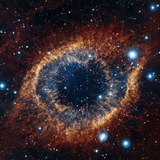Astronomy/Astrophysics
03 Oct 2024 03:41
m is the mass. Like a ball has a mass of 3kg
Читать полностью…
Astronomy/Astrophysics
03 Oct 2024 03:38
We learned it in 7-8th grade lol
Читать полностью…
Astronomy/Astrophysics
03 Oct 2024 03:37
Why though 😭 none of us knows the answer
Читать полностью…
Astronomy/Astrophysics
02 Oct 2024 21:41
Astrophysical Journal in the news
New triple star system sets shortest orbital period record
Professional and amateur astronomers have made a groundbreaking discovery with the help of artificial intelligence, identifying a unique triple star system named TIC 290061484. This stellar trio was uncovered through cosmic "strobe lights" observed by NASA's Transiting Exoplanet Survey Satellite (TESS).
Читать полностью…
Astronomy/Astrophysics
02 Oct 2024 21:04
Ask people in scienceofftopic
Читать полностью…
Astronomy/Astrophysics
02 Oct 2024 19:31
Also use scienceofftopic
Читать полностью…
Astronomy/Astrophysics
02 Oct 2024 19:29
Bro cant disturb.. without consent
Читать полностью…
Astronomy/Astrophysics
02 Oct 2024 19:22
I am a depression patient. Want to share guilts. Pls msg
Читать полностью…
Astronomy/Astrophysics
02 Oct 2024 17:51
Existence Series 3rd Planet is also a moon
->
Titan ( Saturn Moon )Titan is the one with a dense atmosphere, primarily composed of nitrogen with traces of methane. Discovered in 1655.Titan is larger than Mercury and has a unique, Earth-like environment, though much colder.
Beneath Titan's thick, orange-tinted atmosphere lies a surface rich in organic compounds. Its surface features lakes, rivers, and seas of liquid methane and ethane, primarily concentrated near the poles. Titan's temperatures hover around -290°F (-179°C), far too cold for liquid water, but its thick atmosphere allows methane to exist in a liquid state, driving a hydrological cycle similar to Earth's water cycle.
Beneath Titan's icy crust, scientists believe a subsurface ocean of water and ammonia exists, which could potentially harbor microbial life. Titan's complex chemistry and Earth-like processes have made it a focal point for astrobiological studies.
👾🔥
Читать полностью…
Astronomy/Astrophysics
02 Oct 2024 16:40
Rhe T Coronae Borealis explosion is expected to occur soon, potentially within the next few weeks or months. However, it's important to note that the exact timing of this event remains uncertain.
Читать полностью…
Astronomy/Astrophysics
02 Oct 2024 11:11
Existence Series 1st Planet
-> Kepler-186f
Kepler-186f is an exoplanet located about 500 light-years away in the constellation Cygnus. It is notable for being the first Earth-sized planet found in the habitable zone of a star similar to our Sun. Kepler-186f orbits its host star, Kepler-186, which is a K-dwarf star, cooler and smaller than the Sun.
Kepler-186f has a radius approximately 1.1 times that of Earth, suggesting it may be rocky. Its position within the habitable zone means it could potentially have liquid water on its surface, a key ingredient for life as we know it. The planet completes an orbit around its star in about 130 days.
The discovery of Kepler-186f has significant implications for the search for extraterrestrial life, as it demonstrates that Earth-like planets can exist in habitable zones around different types of stars. While direct observations of its atmosphere and conditions are challenging, future missions may provide more insights into its potential for hosting life.
👾🔥
Читать полностью…
Astronomy/Astrophysics
02 Oct 2024 09:12
I have another mobile
Читать полностью…
Astronomy/Astrophysics
02 Oct 2024 09:11
Try with different iso
Читать полностью…
Astronomy/Astrophysics
18 Aug 2024 19:20
Whats the colour of water in Mars
Читать полностью…
Astronomy/Astrophysics
17 Aug 2024 11:49
New members please go through the rules. You can see the rules by typing /rules. Try to have productive discussions here. Please check the guidelines for Asking Good Questions
Читать полностью…

 3984
3984